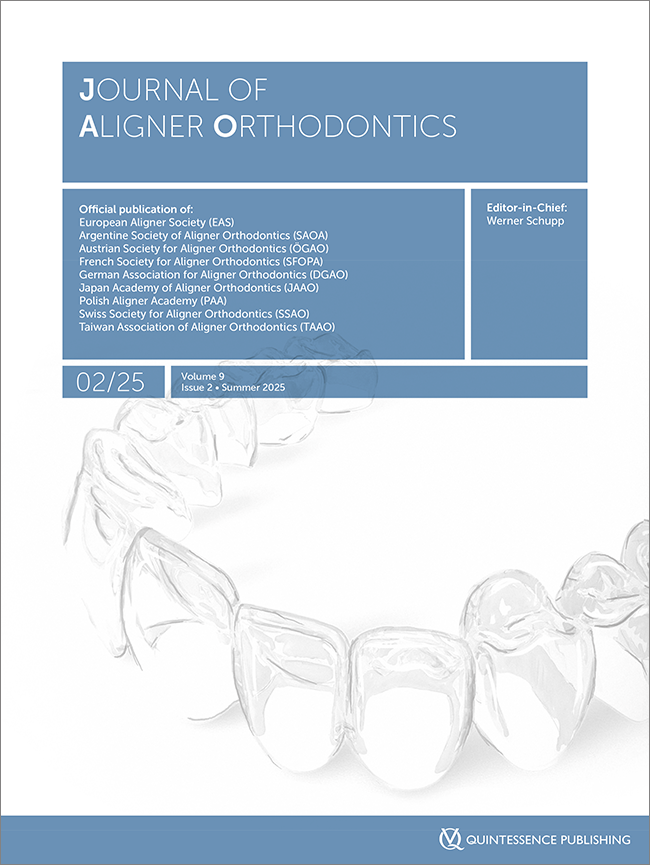Journal of Aligner Orthodontics, 4/2022
EditorialPáginas 223-224, Idioma: InglésGarino, FrancescoJournal of Aligner Orthodontics, 2/2019
EditorialPáginas 89-90, Idioma: InglésGarino, FrancescoJournal of Aligner Orthodontics, 1/2019
Case reportPáginas 7-14, Idioma: InglésMalekian, Kamy / Parrini, Simone / Garino, Francesco / Deregibus, Andrea / Castroflorio, TommasoObjective: To describe the use of clear aligners to achieve mandibular molar distalization in patients with molar Angle Class III relationship.
Materials and methods: Two patients, aged 31 and 23 years old, with molar Angle Class III relationship and canine Class III relationship are presented and discussed. The patients were non-growing patients, so treatment plans included the distalization of mandibular molars. Due to the aesthetic concerns, it was decided to correct the malocclusion only with clear aligners, without additional appliances.
Results: Although the patients were non-growing, distalization of mandibular molars was obtained and Angle molar and canine Class I relationships were achieved. The perception of facial profile improvement was very motivating for patients and it helped to reinforce treatment compliance.
Conclusions: The presentation of these case reports shows that the use of clear aligners was reliable in non-growing patients to correct canine and molar Class III relationships.
Palabras clave: Class III malocclusion, Invisalign, mandibular molar distalization, non-growing patients
Journal of Aligner Orthodontics, 2/2018
Páginas 125-139, Idioma: InglésCastroflorio, Tommaso / Garino, Francesco / Parrini, Simone / Deregibus, AndreaObjective: To describe the use of clear aligners to achieve mandibular advancement in patients with retrognathic mandible.
Materials and methods: Four patients, aged 9 and 10 years old, with a molar Angle class II relationship and canine class II relationships and with convex profile with retruded mandible are presented and discussed. The patients were in correspondence of the pubertal peak, so treatment plans included the advancement of the mandible to possibly stimulate mandibular growth. Due to the aesthetic concerns of the patients and their parents, it was decided to correct the malocclusion by only using clear aligners, without additional appliances.
Results: The important correction of canine and molar relationships was achieved within 6 to 8 months of treatment. The perception of facial profile improvement was motivating for patients and helped to reinforce treatment compliance.
Conclusions: The presentation of these case reports shows that the use of clear aligners in growing patients to correct canine and molar class II relationships with retruded mandibles is successful.
Palabras clave: case report, class II, growing patient, Invisalign, mandibular advancement
Journal of Aligner Orthodontics, 1/2018
Páginas 3, Idioma: InglésSchupp, Werner / Haubrich, Julia / Castroflorio, Tommaso / Garino, Francesco / Lecocq, Guillaume




